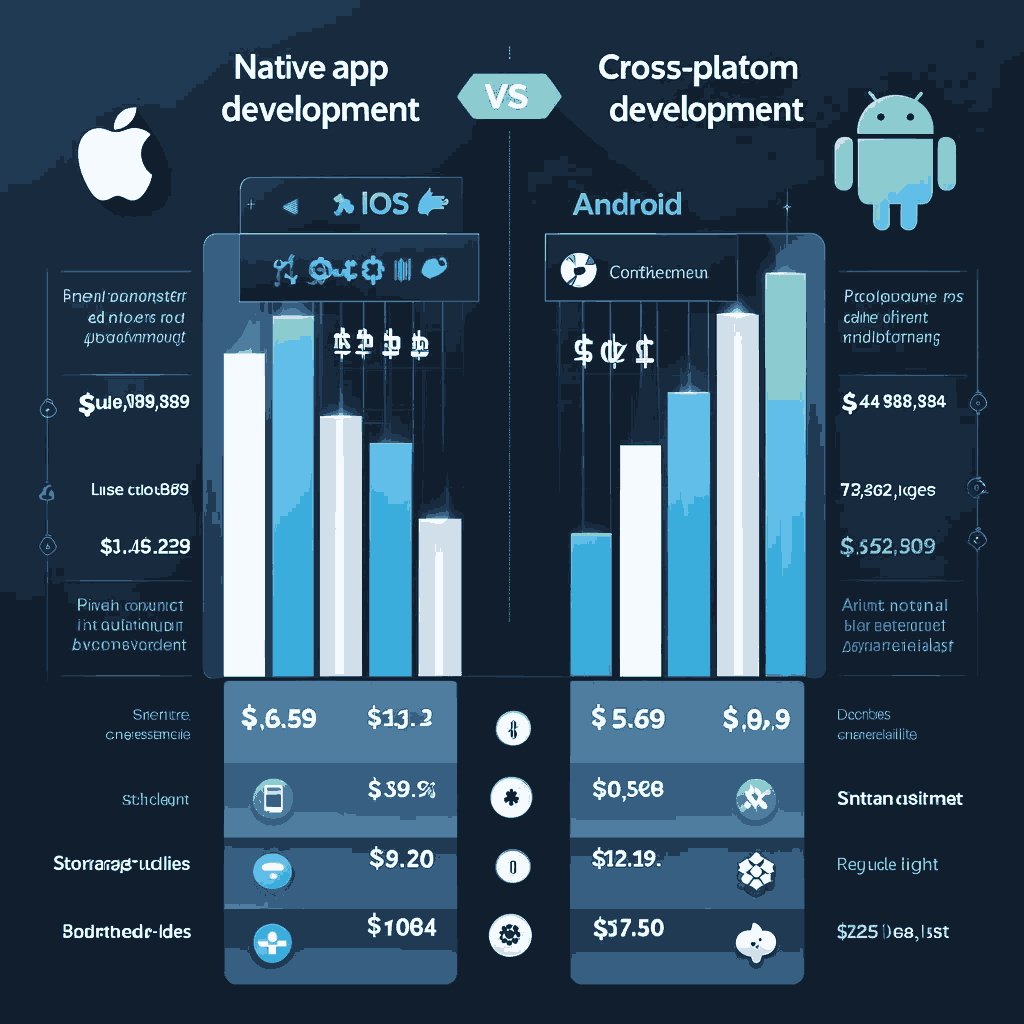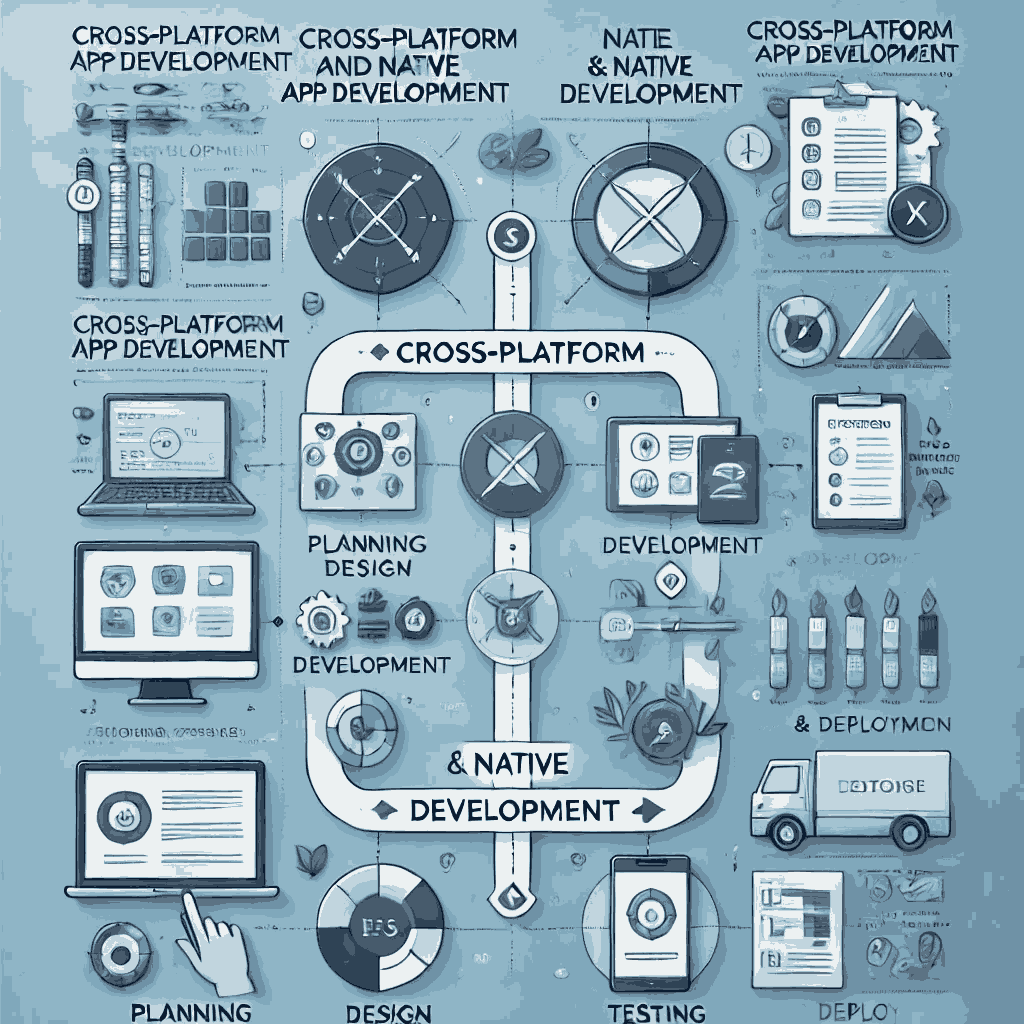In today’s fast-paced digital world, businesses are constantly looking for ways to reach a larger audience, reduce costs, and improve efficiency. One of the most impactful solutions for achieving these goals is the development of cross-platform mobile apps. These apps enable businesses to create a single codebase that runs on both Android and iOS platforms, significantly enhancing their reach and minimizing development time and cost.
The Rise of Cross-Platform Mobile Apps
In the early days of mobile app development, businesses had to create separate apps for each platform, often leading to high development costs and longer timelines. However, with the advent of cross-platform frameworks like React Native, Flutter, and Xamarin, businesses can now develop apps for multiple platforms simultaneously, without compromising performance or user experience.
The Benefits of Cross-Platform Mobile Apps
- Cost Efficiency Developing separate apps for Android and iOS requires duplicating efforts, as developers must write and maintain separate codebases. Cross-platform development allows businesses to use a single codebase for both platforms, significantly reducing development costs.
- Faster Time-to-Market Time is money in business. Cross-platform mobile apps can be developed much faster than native apps because there’s no need for separate development processes for each platform. This allows businesses to launch their apps sooner and gain a competitive edge.
- Consistency Across Platforms One of the most significant advantages of cross-platform apps is that they provide a consistent user experience across Android and iOS. With a unified design and functionality, businesses can ensure that their app delivers a seamless experience regardless of the platform.
- Broader Reach By developing a cross-platform app, businesses can target a larger audience since the app will be available on both major mobile platforms, iOS and Android. This broader reach translates into more potential users and, ultimately, more revenue.
- Easier Maintenance and Updates Maintaining and updating apps is easier with cross-platform development. Instead of managing multiple codebases, businesses only need to update a single codebase, streamlining the process and reducing the chances of errors or inconsistencies.

Example: Popular Cross-Platform Apps
Many leading companies have embraced cross-platform mobile app development due to its numerous benefits. Let’s take a look at a few examples:
- Instagram: Instagram initially started as a native iOS app but later switched to React Native, allowing them to develop features more quickly while maintaining a smooth user experience on both iOS and Android.
- Uber: Uber uses a combination of native and cross-platform technologies. Its cross-platform app helps to manage a large user base while keeping development costs in check.
- Airbnb: Airbnb adopted React Native to streamline its development process, allowing it to maintain a consistent user interface across platforms without the complexity of managing two separate codebases.
Case Study: How Cross-Platform Development Transformed a Yoga App
Challenge: A yoga app startup aimed to reach a broader audience while reducing development costs. They were struggling to develop separate apps for Android and iOS within their budget and time constraints.
Solution: The company decided to switch to Flutter for cross-platform mobile app development. This allowed them to create a unified app that functioned seamlessly on both Android and iOS.
Outcome:
- Reduced Development Time: The team saved 40% in development time by using a single codebase.
- Cost Savings: They reduced development costs by 30%, which allowed them to allocate resources to other areas of the business.
- Increased Reach: The app’s launch on both platforms simultaneously attracted a larger user base, and the business saw a 50% increase in downloads within the first three months.
Cross-Platform Development Process

Conclusion
Cross-platform mobile apps are undoubtedly a game-changer for businesses in today’s competitive landscape. They offer cost savings, faster time-to-market, a consistent user experience across platforms, and easier maintenance. By embracing cross-platform development, businesses can improve their app’s reach, performance, and overall success, all while keeping expenses in check.
For IT software companies, including those that specialize in creating yoga apps or other niche applications, cross-platform development provides an excellent opportunity to expand their user base without compromising quality or increasing costs process, from ideation to deployment.
FAQs
Cross-platform mobile apps are apps developed using frameworks that allow the same codebase to run on both iOS and Android platforms. This reduces development time and costs compared to building native apps for each platform.
Some of the best frameworks include:
- React Native: A JavaScript-based framework for building natively rendered apps.
- Flutter: A UI toolkit by Google for building natively compiled applications for mobile, web, and desktop from a single codebase.
- Xamarin: A framework for building apps using C# and .NET, which compiles into native code.
Yes, modern cross-platform frameworks like Flutter and React Native offer performance that is close to native apps, particularly for most business use cases. However, some highly complex apps might still benefit from native development.
The cost of developing a cross-platform app depends on the complexity of the app and the development team’s rates. However, it’s typically more cost-effective than developing separate native apps for iOS and Android.





